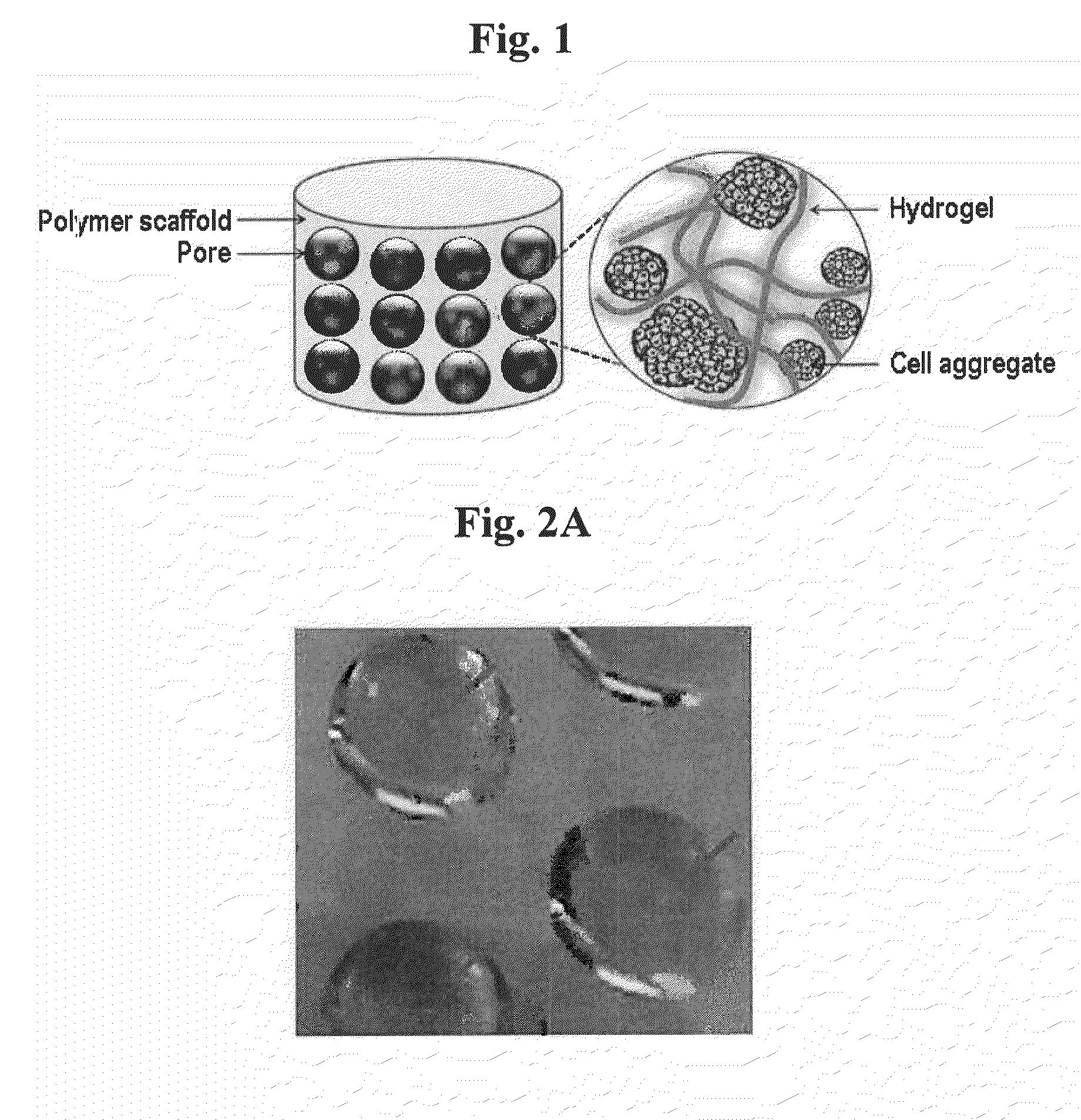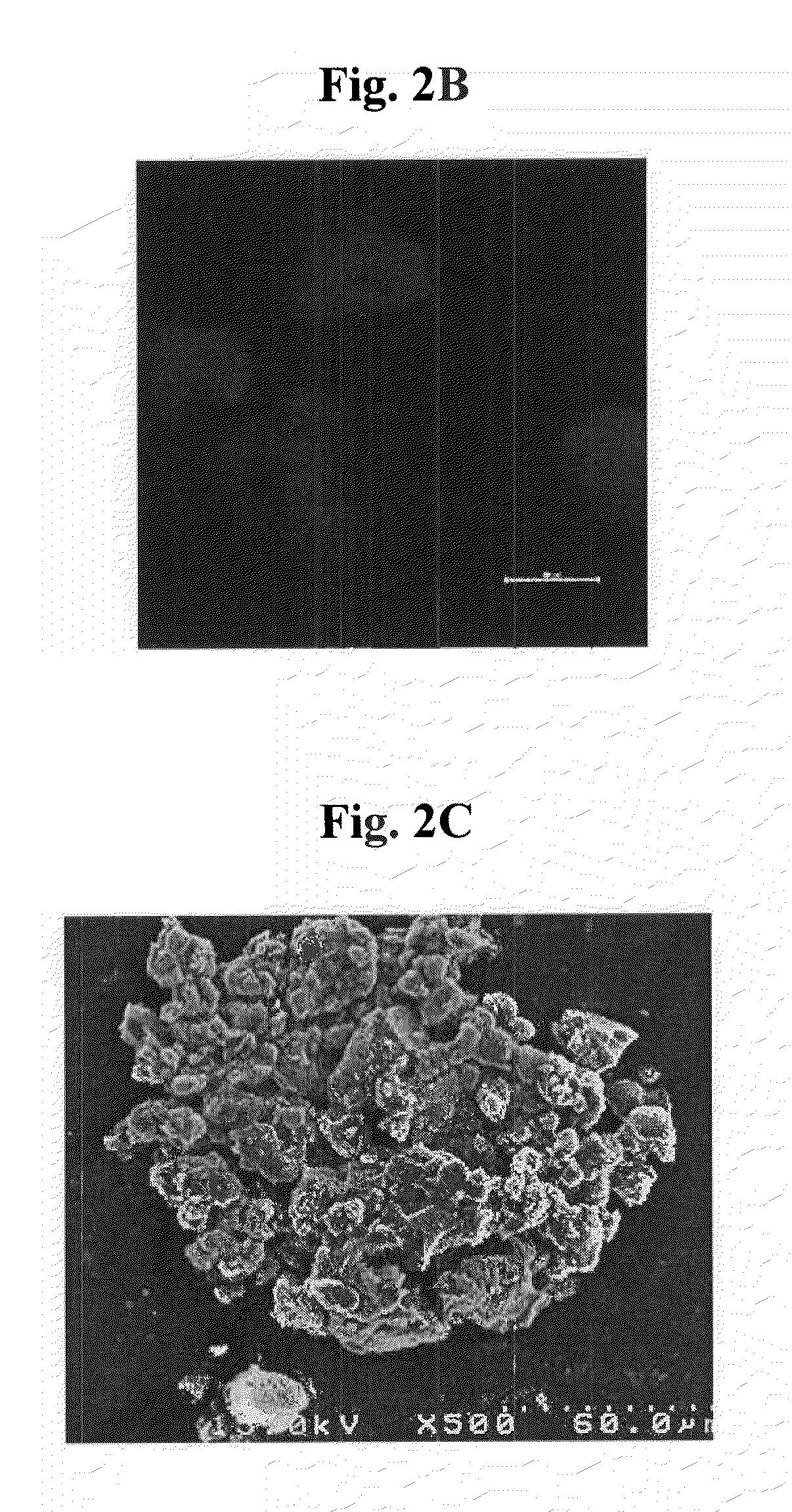Cell aggregate-hydrogel-polymer scaffold complex for cartilage regeneration, method for the preparation thereof and composition comprising the same
- Summary
- Abstract
- Description
- Claims
- Application Information
AI Technical Summary
Benefits of technology
Problems solved by technology
Method used
Image
Examples
example 1
[0054]Bone marrows were collected from the tibia and fibula of 5-week old New Zealand white rabbits and subjected to density gradient centrifugation to separate bone marrow monocytes. The separated bone marrow monocytes were inoculated into a two-dimensional culture dish including 25 ml of DMEM supplemented with 10% serum and 1% penicillin / streptomycin in a concentration of 1×107 cells / ml, followed by culturing in a 5% CO2 incubator at 37° C. for 7 days. The medium was replaced with a fresh medium at intervals of 2 to 3 days. After the monolayer confluence reached 70% on the bottom of the culture dish, the cells were treated with 0.05% trypsin at 37° C. for 10 minutes to detach them from the culture dish. The thus obtained cells were inoculated into the same medium at a concentration of 1×106 cells / ml and subjected to subculture under the same conditions to allow them to proliferate. Bone marrow-derived mesenchymal stem cells obtained after the third passage of subculture were treat...
example 2
[0059]According to the same method as described in Example 1, bone marrow-derived mesenchymal stem cells were cultured, labeled with CFDA fluorophore, and suspended in a medium for chondrogenic differentiation at a concentration of 1×105 cells / ml (1 mM sodium pyrubate, 100 nM dexamethasone, 20 μg / ml proline, 37.5 μg / ml ascorbic 2-phosphate, 1% penicillin / streptomycin, 10 ng / ml TGF-β1, 1% FBS, 1× insulin-transferrin-selenium [ITS+]), to obtain a cell suspension. 40 ml of the thus obtained cell suspension was placed in a rotating bioreactor and incubated in a 37° C. incubator for a week while stirring at a rate of 20 rpm, leading to the differentiation into chondrocytes and formation of cell aggregates. After the incubation was completed, cell aggregates of differentiated chondrocytes were formed in varying sizes, which were then passed through a sieve having a pore size of 700 μm to separate the cell aggregates having a diameter lower than 700 μm. The cell aggregates separated above ...
PUM
| Property | Measurement | Unit |
|---|---|---|
| Fraction | aaaaa | aaaaa |
| Pore size | aaaaa | aaaaa |
| Diameter | aaaaa | aaaaa |
Abstract
Description
Claims
Application Information
 Login to View More
Login to View More - R&D
- Intellectual Property
- Life Sciences
- Materials
- Tech Scout
- Unparalleled Data Quality
- Higher Quality Content
- 60% Fewer Hallucinations
Browse by: Latest US Patents, China's latest patents, Technical Efficacy Thesaurus, Application Domain, Technology Topic, Popular Technical Reports.
© 2025 PatSnap. All rights reserved.Legal|Privacy policy|Modern Slavery Act Transparency Statement|Sitemap|About US| Contact US: help@patsnap.com



